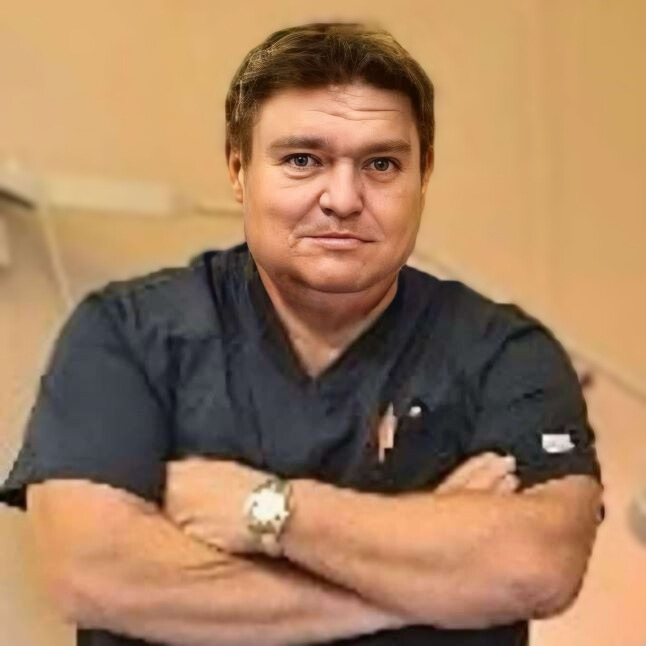 Gynecology is the medical specialty dealing with diseases of the female reproductive organs, as well as their treatment. Certain gynecological problems can only be treated surgically. Gynecological surgeries are always preceded by a specialist examination, and if justified, by further laboratory and imaging procedures as well. Regular gynecological screening is essential for diagnosing often symptomless abnormalities. Early detection of these gynecological problems is an important prerequisite for effective treatment.
Gynecology is the medical specialty dealing with diseases of the female reproductive organs, as well as their treatment. Certain gynecological problems can only be treated surgically. Gynecological surgeries are always preceded by a specialist examination, and if justified, by further laboratory and imaging procedures as well. Regular gynecological screening is essential for diagnosing often symptomless abnormalities. Early detection of these gynecological problems is an important prerequisite for effective treatment.
Depending on the type of problem, gynecological surgeries can be performed using various surgical methods. These include laparoscopic surgeries, during which therapeutic interventions take place in the abdominal cavity, hysteroscopic interventions, i.e., uterine mirroring, where we reach the uterine cavity through the vagina, and situations can arise where open abdominal surgeries are needed. You can read in detail about these surgical methods by clicking here.
In the following, we provide information about the most common surgeries performed on the ovaries and fallopian tubes.
Laparoscopic surgeries for ectopic pregnancy
We speak of an ectopic pregnancy when the fertilized egg implants outside the uterine cavity in an abnormal way and begins to develop. Ectopic implantation most often occurs in the wall of the fallopian tube (horn pregnancy), but it can also occur in the ovaries (ovarian pregnancy), the cervix (cervical pregnancy) and the abdominal cavity (abdominal pregnancy). Ectopic implantation occurs in approximately 1% of pregnancies.
Unfortunately, fetuses implanted in these abnormal places are unable to develop due to lack of adequate environment and blood supply, and since this condition endangers the life of the mother, the embryo implanted outside the uterus must be removed.
How do I know if I have an ectopic pregnancy?
Some of the women who miss their periods and who may have suspected signs of early pregnancy (nausea, morning vomiting, increase in body temperature by 0.5-1 ° C , craving for unusual foods, etc.) take a quick test at home. If the pregnancy test is positive, visit your gynecologist, who will use an ultrasound to check if there is indeed a pregnancy and, if so, whether it is inside or outside the uterus. In the case of a twin pregnancy, implantation can occur both inside and outside the uterus, so an ectopic pregnancy must always be ruled out during the ultrasound examination, even if the fetus inside the uterus has already been found.
In many cases, however, it happens that the attention of the pregnant woman is avoided (or they do not appear markedly), in the case of symptoms or an irregular cycle, a delay of several weeks of menstruation is not even considered special. An ectopic pregnancy can remain symptom-free for up to 4-12 weeks, but the following symptoms may draw our attention to it:
- one-sided lower abdominal discomfort, pain
- missed period followed by vaginal bleeding or thin brownish discharge
- fever
- pain radiating to the top of the shoulder
- pain or discomfort when passing urine or stool
The main danger of an ectopic pregnancy is heavy bleeding, since neither the fallopian tubes nor other abdominal organs are suitable for carrying the fetus.
The ectopically implanted fetus can grow in the wall of the fallopian tube for a certain period of time, but in the process it erodes the blood vessels there and after reaching a certain size, it can puncture the wall (rupture), which can lead to massive - even life-threatening - bleeding. There may be signs of fallopian tube rupture, which require immediate hospital treatment:
- sudden, intense, shooting lower abdominal pain
- dizziness, even fainting
- nausea
- paleness
An ectopic pregnancy damages the given organ (cervix, ovary, peritoneum) in all cases and can lead to heavy bleeding. In urgent cases, in case of uncontrollable bleeding, the doctor often needs to remove the fallopian tube or even the uterus and ovaries.
In order to avoid the above life-threatening situation, the recognized ectopic pregnancy must be removed from the mother's body. With the help of modern ultrasound diagnostics and highly sensitive (β-HCG) pregnancy tests, 70-80% of ectopic pregnancies are still intact today. If diagnostic problems arise, laparoscopy (laparscopy) can make the diagnosis certain, and at the same time, it also creates the possibility of a therapeutic solution at the same time.
Methods of treating ectopic pregnancy:
The goal is to establish an early diagnosis, which can prevent the development of life-threatening bleeding, and we also have the opportunity to perform conservative therapeutic procedures and organ-preserving surgeries and to preserve the ability to conceive.
Some of the ectopically implanted pregnancies may terminate spontaneously and be reabsorbed without symptoms. This may be indicated by a slightly longer than usual, delayed menstruation.
But since we can never rule out the possibility of fallopian tube rupture, close observation of the patient and, in many cases, medical or surgical treatment is necessary.
Drug treatment:
In the treatment of early ectopic pregnancy, we have the option of drug therapy. The active ingredient can be administered systemically (intramuscularly, i.e. administered into the muscle) or locally (introduced directly into the ovum). In the case of local therapy, we visit the abnormally embedded ovum through the vagina with ultrasound guidance or laparoscopy, suck out its contents, and then inject the same volume of medicine back. As a result of the medicine - regardless of the method of its administration - the embryo dies and is usually discharged by itself. If this solution is out of the question (it is not an early pregnancy, the fetus is too big based on the ultrasound, etc.), in that case we resort to surgical procedures.
Surgical treatment methods for horn pregnancy:
While in the past surgical removal of fallopian tubes (salpingectomy) through abdominal incision (laparotomy) was the established surgical procedure, today the modern method of surgical treatment of ectopic pregnancy is laparoscopy.
The laparoscopic method results in less blood loss, less post-operative pain and less recovery time. Another advantage compared to laparotomy is that less adhesions develop in the abdominal cavity after the procedure.
There are two possible laparoscopic procedures, the choice between which depends on the following:
- the size of the ectopic pregnancy
- place of embedding
- fallopian tube condition
- the patient's future family planning intention
Salpingotomy
Salpingotomy is an organ-preserving operation, so its purpose is to keep the fallopian tube so that it can fulfill its physiological function later on. In the event of a successful operation, fertilization can also take place through the affected fallopian tube in the future.
- If the implantation occurred in the middle third of the fallopian tube, a small cut is made on the wall of the fallopian tube with special laparoscopic instruments, and then the embryo and its appendages are removed.
- If the pregnancy is located in the abdominal/ovarian third of the fallopian tube, it is removed from the abdominal cavity with a special suction cup.
- In the case of a pregnancy embedded in the part of the fallopian tube that opens into the uterus, a segmental resection is performed, which means that the part containing the embryo is cut out, and then the ends are reunited.
If the wall of the fallopian tube is ruptured or heavy bleeding occurs during the operation, and if the patient no longer wishes to have another pregnancy in the future, the horn is completely removed. This procedure is also recommended in the following cases:
- ectopic pregnancy in a patient who previously underwent sterilization and then tubal repair surgery
- recurrent ectopic pregnancy
In the case of salpingotomy, the entire length of the fallopian tube is removed. However, it is important to point out that after the operation - if there is a healthy fallopian tube on the other side - a spontaneous pregnancy can occur later without disturbance through the opposite fallopian tube.
Surgical solutions for implantation in other places
- In the case of ovarian pregnancy, during the laparoscopic intervention, we try to separate the pregnancy embedded on the surface of the ovary from its attachment site. If this is not possible, we cut out a piece of the ovary (where the adhesion occurred) or remove it. Of course, in every case, we try the most conservative procedure first, and in case of failure, tissue or organ removal is required.
- In the case of an abdominal pregnancy, implantation can occur in the peritoneum or any other abdominal organ. The surgical solution to abdominal pregnancy can be performed by laparotomy to ensure sufficient access.
- During a cervical pregnancy, miscarriage can be accompanied by very heavy, almost unstoppable bleeding. In such a case - in order to protect the patient's life - we may even be forced to remove the uterus. But in the case of early detection, we are given the opportunity for the above-mentioned drug treatment, followed by instrumental completion.
Ovary Removal
Oophorectomy or ovariectomy is a surgical procedure in which one (unilateral oophorectomy) or both ovaries (bilateral oophorectomy) are removed. In the latter case, the so-called surgical menopause occurs immediately after the surgery. If the fallopian tubes also have to be removed along with the ovaries, we speak of salpingo-oophorectomy.
Possible reasons for ovary removal:
- tubo-ovarian abscess, i.e., an abscess affecting the fallopian tubes and ovaries (which is a pus-filled cavity)
- ovarian cancer
- endometriosis with ovarian involvement (chocolate cyst)
- benign ovarian tumors, cysts
- prevention of ovarian and breast cancer in high-risk women
- torsio ovarii, i.e., ovarian torsion
The ovary can be removed by laparotomy (abdominal incision) or, depending on the type of disease that indicates the surgery, by laparoscopy. Ovariectomy can be performed on its own, but it is often combined with hysterectomy, i.e., uterus removal, if the patient is already postmenopausal, or if she has no future family planning. In case of confirmed ovarian cancer or high risk of its development, the intervention is extended to the removal of fallopian tubes (salpingo-oophorectomy).
Risks of the surgery:
Ovary removal is a relatively safe procedure that rarely causes complications, which may include:
- bleeding
- infection
- damage to surrounding organs
- tumor disintegration and scattering of released cancer cells
- remaining ovarian cells after surgery, which in the case of endometriosis, can cause symptoms again in premenopausal women (e.g., pelvic, lower abdominal pain)
- intestinal obstruction
In the case of removing both ovaries – for women of childbearing age – menopause sets in immediately. The symptoms are caused by the decreased level of female hormones:
- hot flashes
- vaginal dryness
- depression
- increased propensity for heart disease
- memory loss
- decreased libido
- osteoporosis, bone fractures
Hormone therapy can be considered for treating the above symptoms, which is usually continued until the age of 50.
How to Prepare for Surgery?
Before the operation, your doctor may give you the following advice, the adherence to which can help ensure the success of the operation:
- consumption of a laxative solution the day before the operation, which helps to clean the intestines
- on the day of surgery (or 8-12 hours before the operation), do not eat and limit your fluid intake
- the medications you regularly take may need to be taken differently, or you may need to switch to other medications before and after the operation
- you may need a detailed ultrasound and/or CT scan to accurately plan the intervention
How to Plan for a Hospital Stay?
After an oophorectomy, a few days of hospitalization may be needed. The duration of hospitalization depends on the type of intervention (laparotomy, laparoscopy), the indication for it, and the patient's general health condition. Your treating doctor can provide personalized information on the necessary duration of hospitalization. For the time spent in the hospital, you might want to bring the following:
- slippers, bathrobe
- hygiene tools, e.g., toothbrush
- tools suitable for passing the time, such as books, magazines, tablet
How to Prepare for Possible Infertility Before the Surgery?
If you want to have children after the operation, consult your doctor about this possibility. If only one ovary is removed, you can still have children naturally in the future, and your menstrual cycle will also remain. If both ovaries are removed but the uterus is left in place, you can still get pregnant with the help of assisted reproductive methods. A fertility specialist can help with the details.
What to Expect?
The operation is performed under anesthesia. There are two methods of intervention:
- Traditional, open abdominal surgery (laparotomy): During a laparotomy, an incision in the abdominal wall provides access to the ovaries. The surgeon detaches the ovary from the supplying vessels and surrounding tissues, then removes it.
- Laparoscopy, keyhole surgery: During laparoscopy, the intra-abdominal organs can be reached through 3 or 4 small incisions in the abdominal wall using special tools. The surgeon inserts a camera through the first hole and the necessary tools for the operation through the others. Using these tools, the ovaries are detached from the supplying blood vessels, then placed in a bag and removed through one of the small holes.
The choice of surgical method depends on the nature of the underlying disease. The laparoscopic method involves less postoperative pain and a shorter recovery time, but in case of tumors, laparotomy is usually the safer procedure. Sometimes it may happen that laparoscopy is converted to an open surgery during the intervention (e.g., in the case of a large tumor or severe bleeding during the operation).
After the operation, you can expect the following:
- you will be under observation until the anesthetic wears off
- afterwards, you will be placed in your room, where depending on the type of surgery you will need to stay for 24 hours to a few days
- during recovery, try to move, get up as soon as possible, as this promotes faster healing
- recovery time depends on the type of intervention, its indication, and your general condition
- after the operation, most patients can return to their preoperative duties, activities on average within 6 weeks; in fact, this time can be reduced to two weeks in case of laparoscopic surgery
-
Bilateral salpingo-oophorectomyFrom 910 000 Ft
-
Laparoscopic surgery for ectopic pregnancyFrom 758 000 Ft
-
Ovarian cyst removal (with laparoscopy)Custom price
-
Unilateral salpingo-oophorectomyFrom 766 500 Ft

















